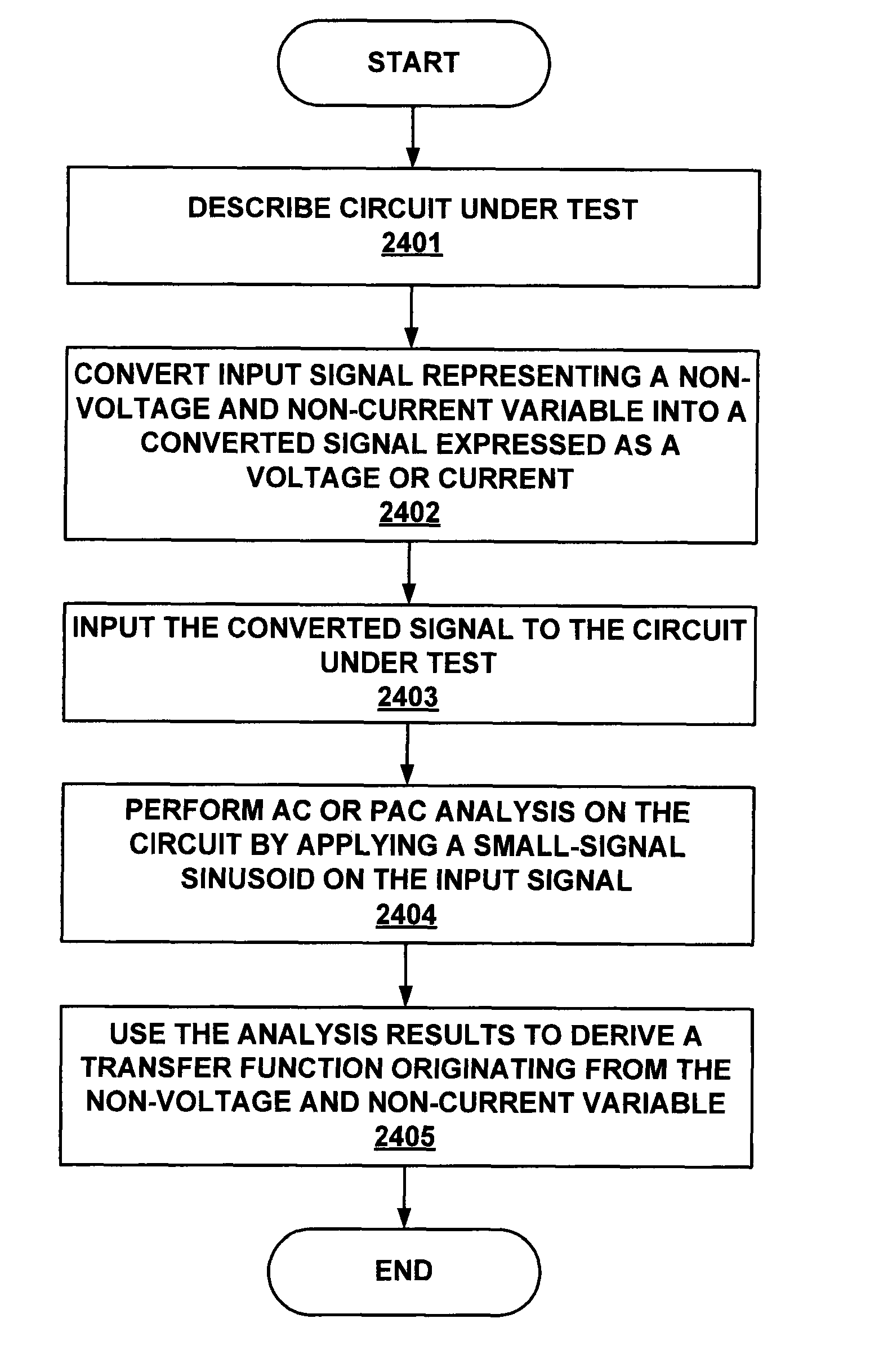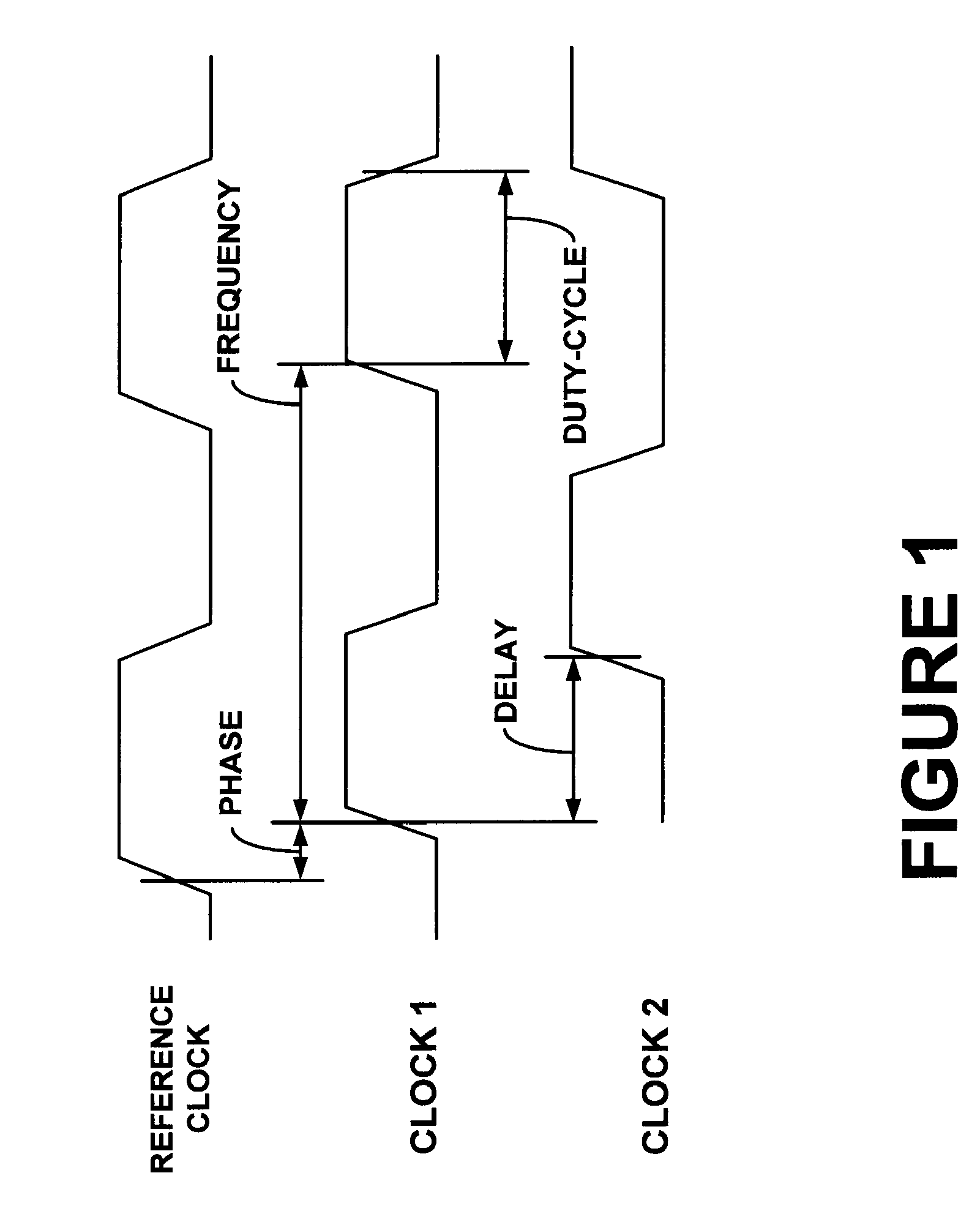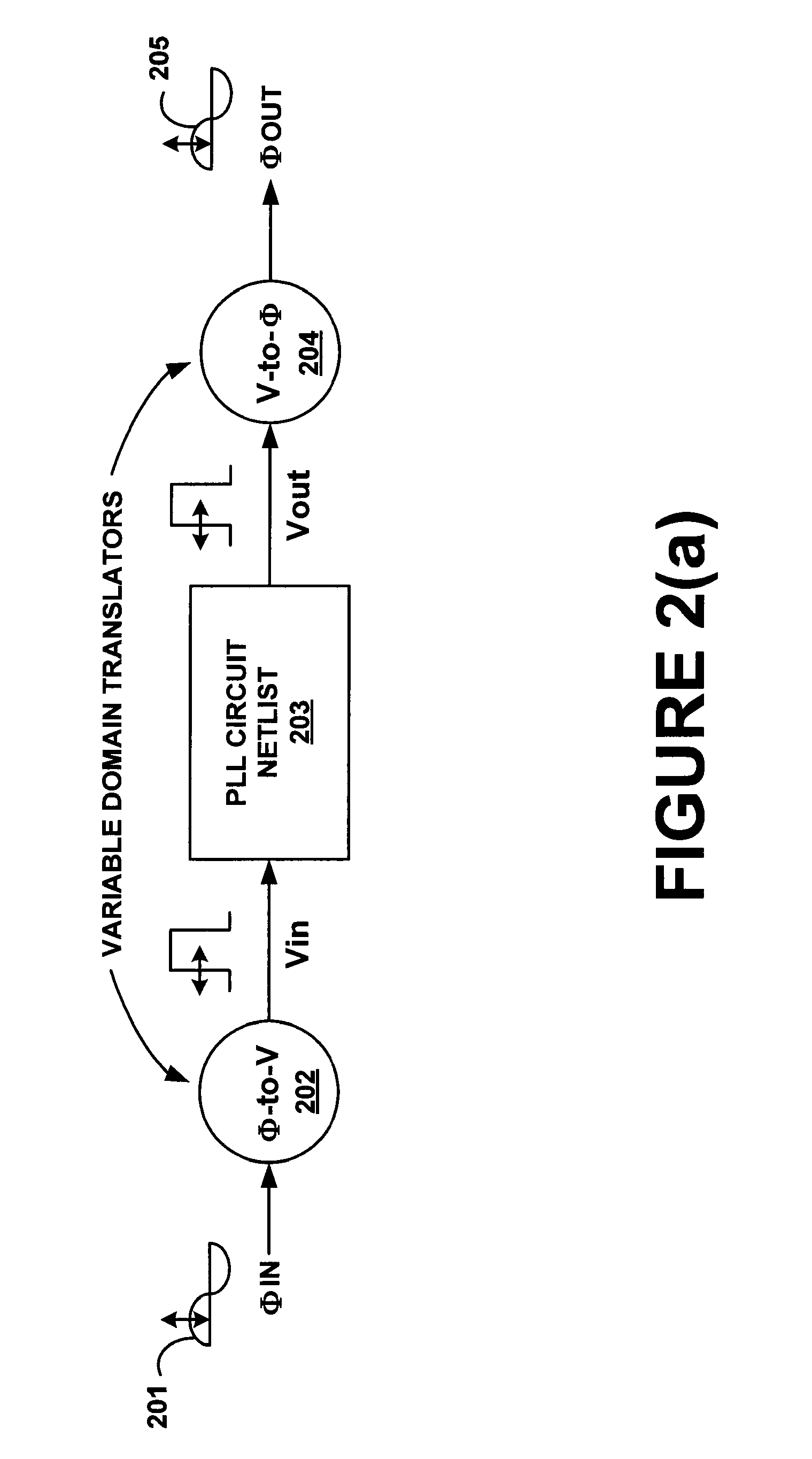Transforming variable domains for linear circuit analysis
a technology of linear circuit analysis and transform variables, applied in error detection/correction, program control, instruments, etc., can solve the problems of high cost associated with semiconductor photolithography and fabrication techniques, difficult to predict the actual performance of integrated circuit designs, and complex design and layout of integrated circuits
- Summary
- Abstract
- Description
- Claims
- Application Information
AI Technical Summary
Problems solved by technology
Method used
Image
Examples
Embodiment Construction
[0047]Embodiments in the present disclosure pertain to performing AC analysis in variables other than node voltage or branch current of the circuit. More than one variable domains may exist to describe the characteristics of an electrical signal. For example, one method to describe a periodic clock signal is its voltage waveform over time. In this case, the chosen variable domain is voltage. Another method would be the waveform of the clock's phase. In this case, the chosen variable is phase. Notice that the phase domain representation of the clock signal does not explicitly express the periodic waveform of the clock signal. It is rather implicitly assumed by the designer that the clock signal has a known periodic waveform such as a sinusoid, square-wave, trapezoidal wave, etc. or that the designer does not care about the detailed description of the waveform for the scope of the linear analysis in the chosen variable domain. Similarly, a clock signal can be represented by a waveform...
PUM
 Login to View More
Login to View More Abstract
Description
Claims
Application Information
 Login to View More
Login to View More - R&D
- Intellectual Property
- Life Sciences
- Materials
- Tech Scout
- Unparalleled Data Quality
- Higher Quality Content
- 60% Fewer Hallucinations
Browse by: Latest US Patents, China's latest patents, Technical Efficacy Thesaurus, Application Domain, Technology Topic, Popular Technical Reports.
© 2025 PatSnap. All rights reserved.Legal|Privacy policy|Modern Slavery Act Transparency Statement|Sitemap|About US| Contact US: help@patsnap.com



